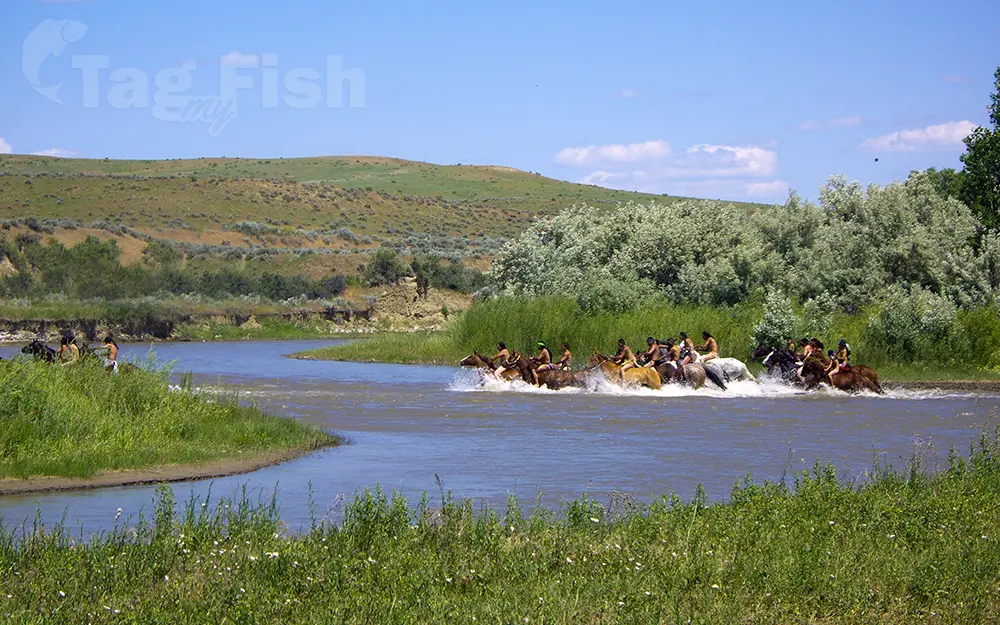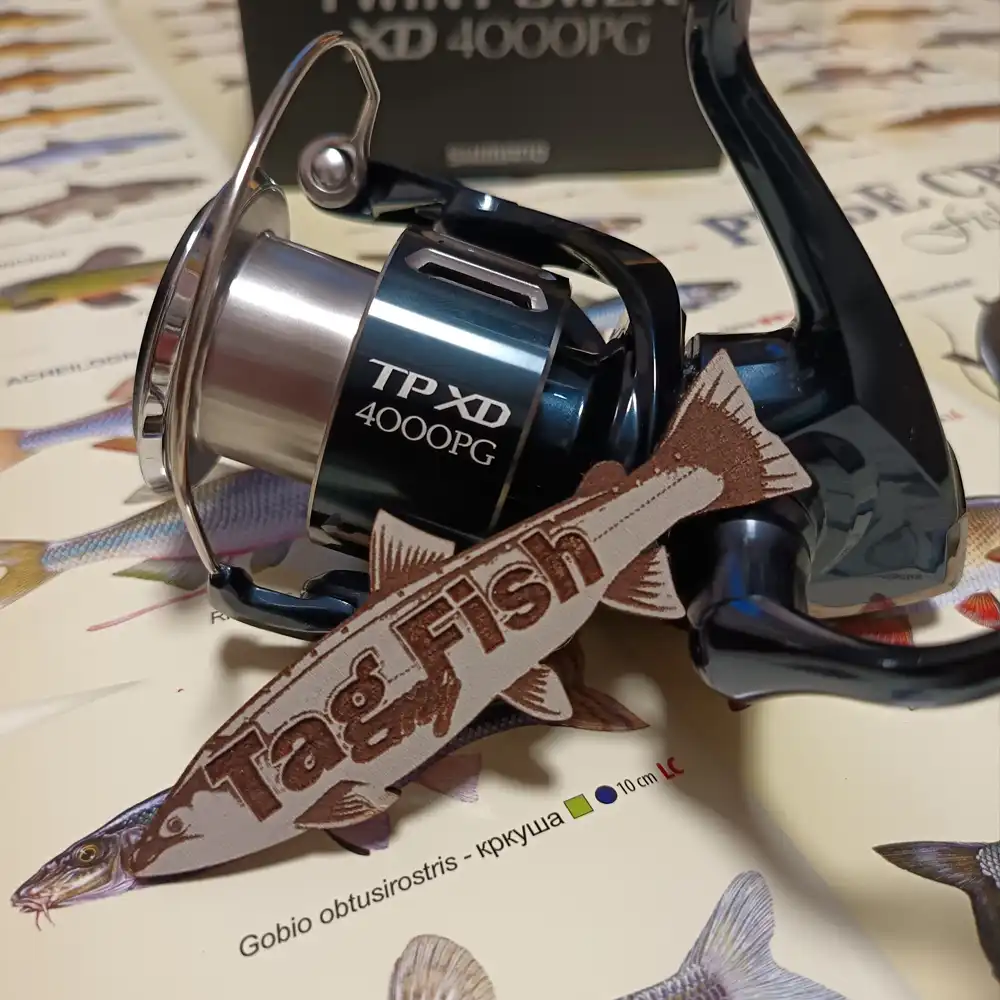Little Bighorn River

General data
- Name: Little Bighorn River
- Water system: Missouri River
- Water type: River
- Progression: Bighorn River -> Yellowstone River -> Missouri River -> Mississippi River -> Gulf of Mexico -> Atlantic Ocean -> Planet Earth
- Climates: Continental
- Continents: North America
- Countries: United States of America
Description
The Little Bighorn River is a 138-mile-long (222 km) tributary of the Bighorn River in the United States in the states of Montana and Wyoming. The Little Bighorn rises in northern Wyoming, deep in the Bighorn Mountains, under Duncum Mountain and Burnt Mountain. The main stream flows through a deep canyon until it issues onto the plains, just at the Montana-Wyoming border. In Little Bighorn Canyon in Wyoming, the Little Bighorn receives other mountain streams as tributaries including the Dry Fork (which despite its name maintains a permanent, year-round significant flow of water into the Little Bighorn), and the West Fork of the Little Bighorn. After issuing from its canyon at the Montana-Wyoming line the Little Bighorn flows northward across the Crow Indian Reservation. The river flows past the towns of Wyola, Lodge Grass and Crow Agency, and joins the Bighorn River near the town of Hardin. At Wyola, Montana, the Little Bighorn receives the flow of Pass Creek flowing north from the Bighorn Mountains. At Lodge Grass the Little Bighorn receives the waters of two tributaries, the largest being Lodge Grass Creek which flows west out of its own canyon system in the Bighorn Mountains, and Owl Creek flowing east and north from the Wolf Mountains. A few miles before reaching Crow Agency, the Little Horn receives the flow of Reno Creek from the Wolf Mountains to the east. River access in Montana on the Crow Indian Reservation Upstream from the point where the Little Bighorn issues from the Little Horn Canyon, the stream flow is in Wyoming. For the first two miles a very rough road goes upstream. All along this road, and all along the stream in this stretch, the land is privately owned and a sign at the entrance to the canyon provides notice of this fact. Wyoming stream access laws are not liberal and trespass laws are strictly construed. In this two mile stretch all riparian access requires trespass across private lands. After two miles of road travel upstream, the road reaches the Bighorn National Forest Service boundary where a parking area is maintained by the Wyoming Fish and Game Department, but signage prohibits overnight camping. Upstream above this point fishing is permitted on the National Forest, but the first river mile of this stretch of fishing is unusually difficult and rugged because the stream bed is littered with very large boulders due to a massive earth slide that blocked the canyon thousands of years ago, after which the river cut down through the slide leaving huge boulders along the river banks. At two miles above the parking area, the river enters a granite-sided box canyon that extends for about a mile, where the river washes from one sheer wall to the other and is impassible to wading anglers except during times of very low water. In this area, the trail leaves the river and climbs around this gorge. The very rough road ends and the trail up the Little Horn Canyon begins a few hundred yards after the parking area. One fork of the trail crosses the river and becomes the Dry Fork Trail. The other trail winds upstream in a westerly direction through the Little Horn Canyon. The Little Horn Canyon trail was originally established for the purposes of delivering mail to Bald Mountain City, a gold mining town, in the late 1800s. The trail is now primarily used by cattle ranchers, marathon runners, and fishermen. River access in Montana on the Crow Indian Reservation After flowing out of Wyoming and into Montana at the mouth of Little Bighorn Canyon, the entire remaining course of the Little Bighorn River and all its tributaries are within the boundaries of the Crow Indian Reservation, and access to the river is subject to the unique and confusing mixture of Montana state and Crow tribal law. Fishing within the boundaries of the Crow Indian Reservation is governed by the U.S. Supreme Court case of Montana v. United States, 450 U.S. 544 (1981). The case addressed the Crow Nation\\\\\\\'s ability to regulate hunting and fishing on the reservation by tribal members and by non tribal members, and the case held that the Crow Tribe may prohibit or regulate hunting or fishing by non-members on land belonging to the Tribe or held by the United States in trust for the Tribe. On tribal lands, the Crow Tribal Code (2005) addresses fishing by non-members in Title 12. Non-members may fish on Tribal lands but only while possessing a Tribal Recreation License, with appropriate permit to fish. and only with an enrolled Crow Tribal member in attendance, who is trained and properly licensed as a fishing guide. While the case of Montana v. United States also holds that the Tribe may not prohibit non-Indians from hunting and fishing on lands not owned by the tribe or held in trust for the tribe, such parcels of \\\\\\\"fee lands\\\\\\\" are usually not extensive and are scattered randomly among the parcels of Tribal lands, and there is no indication on the ground to indicate to the non-member fisher person when they are on fee land, where they would be trespassing, and when they are on Tribal lands in breach of the law. The Crow Tribal Court has exclusive jurisdiction over non-Indians who commit violations on Tribal land. If a non-member is found in violation of any part of the Tribal Code, they are subject to fines (Crow Tribal Code 2005, Section 12-11-109), forfeiture of fishing gear, and payment of court costs This confusing and chaotic situation, in which enforcement of fishing restrictions and access to streams depends on who owns the land the fisher person is standing on, has caused fishing websites to conclude: ’However, the Little Bighorn runs entirely within the boundaries of the Crow Reservation and access to it is next to nil.’ The prospective fisherman should not be misled by the fact that the blue ribbon trout fishery on the Big Horn River, below the Yellowtail Dam, is fished by non-Indians (provided the non-member complies with Montana fishing regulations and laws), though this stretch of the Bighorn River is within the boundaries of the Crow Reservation. In the seminal case of Montana v. United States, 450 U.S. 544 (1981), the court exempted the Big Horn River from their ruling, holding that the bed of the Bighorn River was not included within the grant of tribal lands to the Crow Tribe in their prior treaties, and thus upon the admission of Montana to the Union the bed of the Big Horn River (and thus the right to fish on the Big Horn River) passed from federal ownership to the state of Montana.


